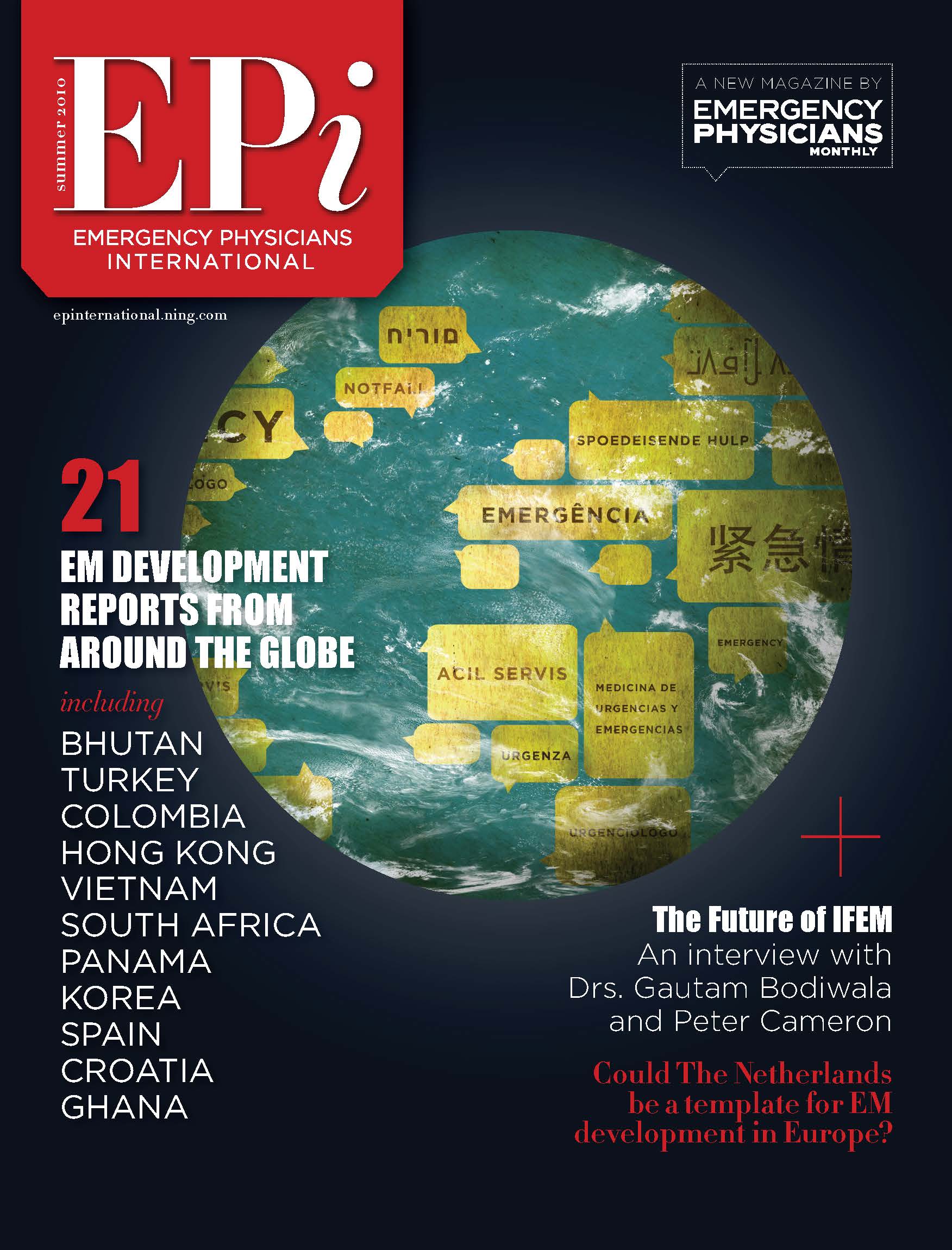The Future of Emergency Medicine Looks Hybrid
By Dr. Barbara Hogan & Prof. Dr. Christoph Rasche
The rigid structure of emergency care treatment in many countries is preventing different healthcare treatment sectors from participating in care provision. This is viewed as creating substantial additional costs for national health budgets. The concept for the future is likely to involve hybrid emergency medicine (EM) concepts combining the resources of both in-hospital care and out-patient treatment.
Current healthcare systems in many countries globally are characterised by silo mentality, strict demarcation lines for responsibilities and institutionalised limits on care provision. Provision of EM, itself multi-disciplinary, suffers from these limits.
For the future, a hybrid treatment model providing a connection between the strengths of in-hospital emergency departments (ED) and ambulatory outpatient care could provide the answer with an economic symbiosis providing cost advantages and improvements for healthcare sectors as a whole.
Many healthcare systems worldwide are facing pressure to restrain costs by reducing the time patients spend in hospital beds, or are seeking methods of treating patients outside of hospitals. Some systems in Europe, including Germany and Scandinavia, are increasingly stressing the concept that healthcare provided in a hospital bed should be the exception. Long periods of hospital bed occupancy are still a feature of many healthcare systems worldwide, despite alternative treatment methods being available.
Differing payment structures inside the various medical disciplines and different working procedures in the individual care provision sectors have led to hospitals in some countries even withdrawing from the outpatient sector partly because of the overwhelming need to deal with the larger numbers of in-patients. This can intern create exit problems for EDs and contribute to ED-crowing.
Ambulatory treatment systems are also facing pressure to restructure in many regions. A lack of doctors for family practices especially in rural areas will probably lead to horizontal and vertical integration of healthcare structures through creation of more outpatient Ambulatory Care Centers (ACCs) also called Outpatient Care Centers to replace traditional family doctor practices.
The creation or expansion of such ACCs involving physicians of different specialties, will also create new capabilities for a one-stop healthcare vision offering a one face to patient in a single location under one roof. ACCs in countries worldwide are expected to develop the capability to satisfy the requirements of demanding patients, including those willing to pay more for rapid or extra treatment. The likely high level and wide spectrum of medical expertise will also be expected to develop a policlinic function with care provision extending to complex diagnosis and interventions.
With this level of expertise, ACCs can also enter the EM sector. This can help relieve hospital EDs. The first ACCs in Germany have started emergency treatment consultations in which patients can attend and receive care without an appointment.
The presence of a specialty physician in EM, still not recognised by a series of European countries, would be of great assistance to identify patients with serious illnesses and to rapidly treat patients with less-urgent illnesses.
With medical specialties in the ACCs ranging from internal medicine to out-patient surgery, other physicians can take over the detailed treatment programme. Such concepts could relieve hospital EDs of the need to see and treat large numbers of patients with complaints which can be treated as out-patients. Patients in need of in-house care could still be identified by the ACCs and transferred to hospitals.
Advances in technology mean some medical specialities such as ophthalmology plus oral- and maxillofacial surgery will have equipment in an out-patient ACC which will reach the same standard as large hospitals. Such hospital-based specialities are expected to face pressure to undertake treatment in out-patient mode. ACCs could even offer beds with a short occupancy time which would enable a substantial transfer of patients from the hospital sector.
Large-size ACCs could also focus on specific areas such as neurological treatment or eye care. The smaller scale of the ACC organisation could enable much faster reaction to treatment needs than the less-flexible hospital organisations and also move more flexibly in introduction of new technology. This would also give advantages in provision of an emergency care capability offering both detailed emergency diagnostics and in-depth treatment.
In Germany, France and Britain, indications are that the number of patients in EDs fell during the anti-corona lockdown periods. In Germany, indications are that some hospitals lost up to 50% of emergency patients and around 15% of normal in-patient numbers during lockdowns.
In countries where hospitals are commercial operations, this may well spark a re-assessment of emergency medicine and the need for new types of out-patient capacities to ensure profitability.
Hospitals themselves should invest in ACCs to expand expertise in the out-patient sector to supplement their activities in the in-patient sector. This could create a new spectrum of healthcare performance with emergency care built into the concept. Minimally-invasive surgery and high-performance diagnostic equipment means out-patient clinics can undertake treatment categories previously only regarded as possible inside hospitals.
ACCs could also develop to offer convenience medicine as a healthcare campus. This could include offering treatment at weekends including “emergency care” for patients willing to pay more for rapid weekend or out of hours treatment.
These centres could also achieve a significant presence especially in rural areas lacking physicians offering telemedical options for both emergency and elective healthcare. They could be part of a unified platform linking up with hospitals, family doctors and other medical specialities giving patients a new option.
Artificial intelligence (AI) is also opening new possibilities in emergency medicine. One example is self-driving vehicles which can be called to the place where the patient is located with a physician video consultation. A prescription can be printed out or the patient transported to a hospital. But instead of joining the waiting line in a crowded ED, ACCs could provide another treatment destination for AI-controlled vehicles.
Creating new hybrid concepts breaking the boundaries between in-patient and out-patient care could be an indirect answer to both reducing crowding in EDs, squeezing more results from healthcare spending. The concept could also create new demand and professional opportunities for specialty EM physicians.
Authors
Dr. Barbara Hogan, MBA
CEO & Medical Director MVZ an der Elbe Geesthacht / Hamburg, Germany
E-Mail: drhogan@online.de
Prof. Dr. Christoph Rasche
Tenured Professor for Management, Sport Economics & Professional Services, University Potsdam, Germany
E-Mail: christoph.rasche@uni-potsdam.de







